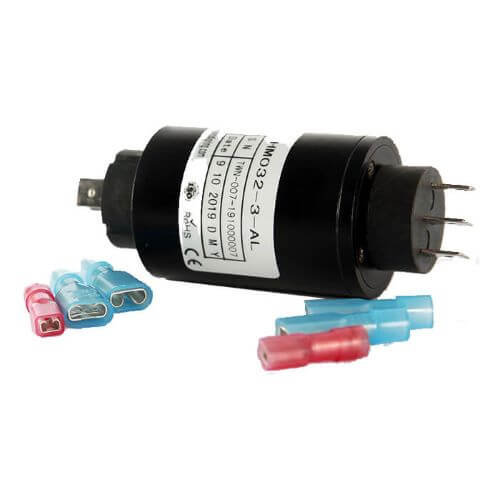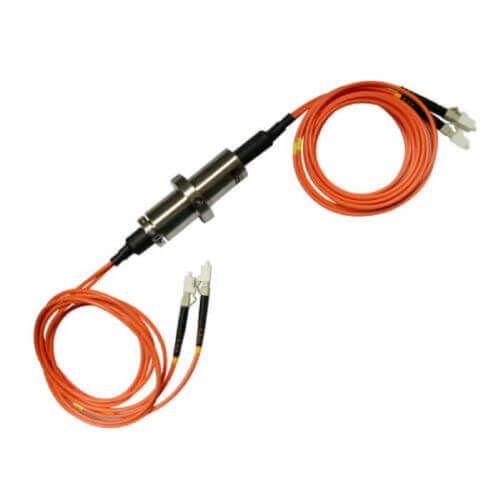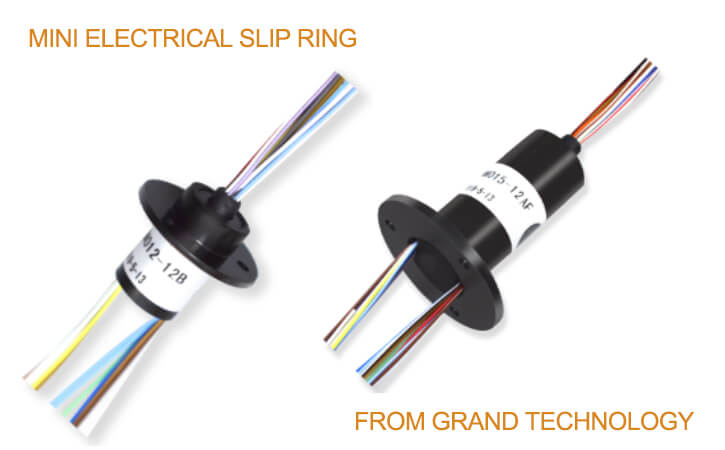In this comprehensive analysis, we delve into the world of spinning wire connectors, exploring their essentiality, operation, varied types, cutting-edge trends, and more, providing the knowledge you need when dealing with these ubiquitous components.
Introduction to Spinning Wire Connectors
In the modern age where technology forms the bedrock of our daily existence, most of our devices, machines, gadgets, or even larger industrial machinery rely heavily on complex electrical and mechanical systems. Spinning wire connectors, albeit less heralded, are crucial in ensuring that these systems function optimally.
What exactly are these components? Spinning wire connectors, also known as rotary electrical interfaces, rotating electrical connectors, collectors, swivels, or electrical rotary joints, are designed to establish an electrical connection in any electromechanical system that experiences continuous or intermittent rotation between different parts.
At their core, spinning wire connectors offer a simple yet effective solution for a complex technical challenge: transmitting power and signals securely from stationary to rotating structures and vice versa. They do this while withstanding the mechanical stress of constant rotation, whether occurring concurrently or intermittently.
The benefits and uses of spinning wire connectors span a range of applications across multiple industries. They are instrumental in the seamless operation of wind turbines, door interlock systems on trains and buses, amusement park rides, rotating signage, CT scanners in hospitals, and countless other applications involving rotating devices.
The presence of these connectors is often behind the scenes, but their impact is far-reaching, enabling efficient power transfer without jeopardizing system performance. They improve the longevity and reliability of rotating systems, making them a cost-effective solution for the long term. Understanding spinning wire connectors is almost like peeling back the cover of the machinery we take for granted and appreciating the elegance of the design and intricacies involved in their operation.
As we delve further into this discussion, we will explore different types of spinning wire connectors, their specific applications, key factors to consider when choosing the appropriate connectors for your needs, how to properly maintain them, innovations in the field, and what the future holds for them. Join us as we embark on this insightful journey into the world of spinning wire connectors.

The Working Principles of Spinning Wire Connectors
As we explore the operating principles of spinning wire connectors, it’s essential to understand that their primary objective is to facilitate the transfer of power and signals between stationary and rotating components in systems that experience rotational movement. This seemingly straightforward requirement involves a multitude of mechanical and electrical phenomena that must work harmoniously for the system to function smoothly.
The basic architecture of a spinning wire connector consists of two primary parts: a stationary part (often called the stator) and a rotating part (called the rotor). These parts are designed to maintain electrical contact during movement while minimizing friction and wear.
Most spinning wire connectors employ a brush and slip ring mechanism as the basis for their operation. The stator typically houses the brushes, which are made from a conductive material, primarily metal or graphite. These brushes make a sliding or rolling contact with the slip rings (usually metal rings or tracks) mounted on the rotor. As the rotor turns at varying speeds, the brushes maintain consistent contact with the slip rings, ensuring an uninterrupted flow of power and signals to and from the stationary part.
It is crucial to recognize that spinning wire connectors can accommodate more than just electrical signals. Specialized designs cater to different types of signal transfers, such as optical signals (in optical rotary joints) or fluid transfers (in fluid rotary unions). Despite the difference in media transmitted, the core operating principle remains the same: maintaining a continuous, stable connection between stationary and rotating components within the system.
The effectiveness of spinning wire connectors in transferring power and signals hinges on numerous factors, including the quality of materials used, the precision of the brush and slip ring interface, and the system’s rotational speed. An optimized design minimizes friction and wear, allowing for longer service life and more reliable performance.
We must appreciate the complexity and coherence behind the operation of spinning wire connectors. The seamless transfer of power and signals amidst constant rotation lies at the crux of their functionality, providing immense value and reliability in numerous applications across diverse industries.
Exploring the Types and Applications of Spinning Wire Connectors
Just as the world of spinning wire connectors envelops various entities, these entities aren’t a monolithic group either; rather, they come in diverse types, each engineered to meet specific needs across a myriad of applications. Therefore, understanding these distinctive kinds and their roles will provide us with an enriched perspective on their practical usefulness.
Electrical Rotary Connectors
These are the standard variants of spinning wire connectors. They are primarily designed to transmit electrical power and signals from a stationary circuit to a rotating component. The key features include minimized contact resistance, lower electric noise, and higher current capability. As a result, this type is heavily used in electronics, industrial machinery, renewable energy setups, and robot technologies.
Fibre-Optic Rotary Joints (FORJs)
Fiber Optic Rotary Joints (FORJ) play a critical role in transmitting optical signals across rotating interfaces, which makes them invaluable in systems relying on high-speed data transmission or delicate light-based signals. They find extensive applications in fields such as telecommunications, medical imaging, and surveillance systems.

Fluid Rotary Unions
Fluid rotary unions, sometimes also referred to as hydraulic or pneumatic rotary joints, are designed to transmit fluids or gases across a rotating interface. They typically feature multiple passages allowing for differentiated fluid paths. Consequently, these spinning wire connectors are common in cooling systems, hydraulic equipment, and food and chemical processing industries.
Hybrid Rotary Connectors
Reflecting the multi-faceted needs of modern applications, hybrid connectors offer more than one type of transmission across the same rotary interface. They may combine standard electrical connections with optical or fluidic channels depending on the application’s requirements. Hence, they are often used in intricate machinery, comprehensive test setups, and advanced research equipment.
As we delve deeper into each variant of spinning wire connectors, it’s clear to see that their application extends across a broad spectrum of industries, from wind energy and marine to aerospace. Depending on their specialization and purpose, they help facilitate an array of functions and provide solutions to challenges associated with rotating interfaces, further solidifying their importance in our technological ecosystem.
Key Factors When Choosing Spinning Wire Connectors
Piecing together a mechanical or electrical system can be likened to solving a complex puzzle where every component must meld seamlessly with the others to build a functional unit. Choosing the right spinning wire connector for your system is a critical component of this puzzle. The decision, however, is influenced by several factors, centering on an understanding of the task at hand and the conditions the selected connecter will have to endure.
Here are a few fundamental factors to ponder when selecting an appropriate spinning wire connecter:
Voltage and Current Requirements
The first step is assessing the electrical needs of your system. Each connector varies in its capacity to carry voltage and current. Therefore, ensure the connector you opt for aligns with your system’s power needs. Using an improper connector could inhibit function, cause damage, or pose safety hazards.
Rotational Speed
Spinning wire connectors are designed to operate under varying rotational velocities. Understanding the speed of rotation and acceleration/deceleration profiles required for your specific application can help you choose a connector that can withstand mechanical stresses.
Size and Weight Constraints
Every machine or system has spatial limitations, and the spinning wire connector must fit these constraints to function correctly without hampering its surroundings. Additionally, weight considerations are paramount in applications where overall system weight impacts performance, such as in aerospace or robotics.
Environmental Factors
Environmental conditions can considerably affect a connector’s performance and lifespan. Consider factors like temperature extremes, exposure to moisture, corrosive substances, or other challenging environments. Specialized connectors are available that can withstand harsh conditions.
Type of Signal or Medium to be Transmitted
The type of connectors depends heavily on what you need to transfer – electrical signals, optical signals, fluids, or a combination. Tailoring your choice to the specific needs of your system is crucial.
Reliability and Lifespan
Consider the connector’s intended service life and required reliability. Depending on the criticality of the application, you may need a connector that guarantees zero failure over its lifetime. Here, factors such as brush wear, resistance stability, and contact reliability come into play.
Making an informed decision when selecting the most suitable spinning wire connector can significantly bolster the system’s efficiency, ensuring that the connector integrates seamlessly and contributes to the overall smooth operation and longevity of your system. By considering these factors, you’ll be well-equipped to make an optimal choice.
Installation and Maintenance of Spinning Wire Connectors
Integrating spinning wire connectors into a system and maintaining them effectively lies at the nucleus of their functionality and service life. A mechanism may seem flawless on paper, but real-world benefits hinge on correct installation and regular maintenance. This section delves into various aspects of these critical stages, highlighting essential pointers for every user.
Installation
The precise installation process of a spinning wire connector largely relies on its type and the specific system it’s deployed in — a few generalized steps hold:
- Understanding the System: This is an essential first step. Grasp the purpose of the system, how it operates, and where the connector needs to be installed.
- Choosing the Right Connector: Based on the system’s requirements, choose a suitable connector. Consider factors like voltage and current specifications, type and speed of rotation, environmental conditions, and signal or medium type.
- Securing the Connector: Position the connector so that the rotor and stator align correctly with the rotating and stationary parts of your system, respectively. Ensure the connector is securely fastened to prevent movement and misalignment.
- Wiring: Correctly wire the connector, following any supplied diagrams or instructions. Be cautious not to pull, bend, or strain the wires excessively.
Maintenance
Just like any other piece of machinery, spinning wire connectors benefit significantly from regular maintenance:
- Regular Cleaning: Dust and debris can accumulate on the brush and slip ring surfaces over time, impeding their contact and causing increased resistance. Regularly clean these surfaces to ensure optimal contact quality.
- Visual Inspection: Look for any signs of wear and tear, especially on the contact surfaces. This can help predict potential failures before they occur.
- Check Electrical Performance: Periodically measure the resistance across the contacts to ensure they’re within specified limits. Irregularities can be indicative of problems like brush wear, dust accumulation, or misalignment.
- Lubrication: If recommended by the manufacturer, apply suitable lubrication to rotating parts, ensuring smoother operation.
Troubleshooting
Despite proper installation and maintenance, issues might crop up. Some common problems and their potential solutions include:
- Increased Contact Resistance: This might be due to dust or foreign substances on the contact surfaces. Cleaning these surfaces might resolve the issue.
- Unstable Electrical Connection: The connectors may have become misaligned or worn. Check for any rotor and stator misalignment or significant brush/slip ring wear.
By adhering to these practices, you can effectively enhance the performance and lifespan of spinning wire connectors, thereby ensuring the smooth operation of your system.
Latest Trends and Innovations in Spinning Wire Connector Technology
In a perpetually evolving technological landscape, it’s crucial to stay abreast of the latest breakthroughs that are molding the future of spinning wire connectors. From new materials to ingenious designs and integrations, the following innovations are significantly shaping this niche:
New Materials for Enhanced Performance
Adopting new materials in spinning wire connectors has resulted in enhanced performance and longevity. For example, the use of precious metals like gold and silver in electrical connector contacts reduces contact resistance. Similarly, the incorporation of advanced polymers and ceramics in certain components has affirmed their durability in harsh conditions.
Design Modifications for Better Efficiency
As experts delve deeper into how the connector components interact, design modifications are emerging to improve performance and durability. For instance, slip ring designs now often feature advanced brush geometries, ensuring effective contact with less friction and wear. The development of thinner fluid rotary unión seals has led to lower leakage rates.
Smart, Integrated Sensors
The incorporation of sensors in spinning wire connectors has enabled real-time monitoring and predictive maintenance capabilities. Measurements of parameters like temperature, pressure, and contact resistance can provide valuable insights into the connector’s operational state. This data-driven approach ultimately boosts performance and reduces unplanned downtimes.
Higher Data Transmission Rates
As data transfer speeds skyrocket, optical rotary connectors have witnessed significant evolutions in their design to handle these rising demands. Innovations in fiber optics technology, such as multi-fiber connectors and wavelength multiplexing, have opened doors to considerable advancements in connector capacity and performance.
Wireless and Contactless Solutions
As wireless and contactless technologies mature, they are increasingly being adopted in spinning wire connectors. Examples of these technologies include inductive and capacitive power transmission, which eliminates the need for mechanical parts, offering longer-lasting and more robust solutions.
Customization and Miniaturization
The trend toward highly customized and compact connectors has emerged in response to the growing need for application-specific solutions, especially in high-end industries like aerospace and high-precision robotics. Through 3D printing and microfabrication techniques, these connectors pack complex features into minuscule form factors.
These latest innovations and trends are significantly bolstering the capabilities of spinning wire connector technology, ushering in a new era of unparalleled performance, reliability, and intelligence. With countless applications and industries relying on these technologies, staying at the vanguard of innovation enables engineers and designers to harness the full potential of these critical components.
Real-Life Applications of Spinning Wire Connectors
Examining real-world cases where spinning wire connectors have been deployed can offer a compelling picture of how they’re shaping different industries. Here are two such case studies that encapsulate their crucial role:
Case Study 1: Automotive Industry – Electric Vehicle Charging
A significant application of spinning wire connectors is within the rapidly growing electric vehicle (EV) market. Electric vehicles need to be periodically recharged, and the connectors used for this activity need to withstand hundreds, or even thousands, of connect-disconnect cycles. In this context, a major automotive manufacturer was facing issues with the durability and reliability of the charging connectors in their EV line.
The solution involved adopting high-quality spinning wire connectors within the charging infrastructure. These rotating connectors, made with durable materials and designed for repetitive use, provided robust contact integrity and minimized wear and tear. This boosted plug lifespan, providing a more reliable and cost-effective solution, which significantly enhanced the end-user experience and the manufacturer’s reputation.
Case Study 2: Robotic Surgery – High Precision Medical Equipment
In the medical field, robotic surgical systems are revolutionizing how surgeons perform invasive procedures. These robotic systems, fitted with tiny instruments, offer exceptional precision but demand highly reliable and compact components.
In one particular instance, a leading medical equipment manufacturer needed a rotating connection to transmit power and data through the articulating arm of a surgical robot. The challenge was crafting a connector small enough to fit the robotic arm without compromising reliability or performance.
The solution was a miniature spinning wire connector, customized to the application’s specific needs. By adopting cutting-edge microfabrication techniques, the connector incorporated the necessary electrical and data-transfer capabilities within an incredibly compact design. This spinning wire connector’s integration into the robot proved instrumental in ensuring seamless performance, allowing surgeons to perform delicate procedures with utmost precision and reliability.
Understanding how spinning wire connectors have been employed in different industries gives us a window into their far-reaching potential. From enabling the EV transition to facilitating remarkable strides in medical technology, these connectors are proving to be indispensable components in the machinery of innovation.
Future Prospects of Spinning Wire Connectors
The role of spinning wire connectors in sustaining technological development is evident across numerous industries. This position stands to continue developing at a rapid pace, as new applications emerge, and ongoing research promises novel functionalities and enhanced capabilities. The following are some predictions for the future of spinning wire connectors:
Expanding Applications
Given the growing need for connector solutions in diverse areas such as renewable energy, electric mobility, robotics, and telecommunications, the demand for spinning wire connectors is expected to rise. These connectors are also likely to play an integral part in upcoming sectors like the Internet of Things (IoT), 5G connectivity, and smart city infrastructures.

Innovations in Material and Design
The exploration of new materials and design modifications promises even more efficient and versatile connectors. As semiconductor materials and nanotechnology evolve, future spinning wire connectors could feature superior conductivity, improved heat dissipation, and enhanced miniaturization, allowing them to embed within increasingly complex devices.
Intensified Data Handling Capacities
As data transfer requirements grow in applications such as autonomous vehicles and advanced robotics, more sophisticated spinning wire connectors capable of supporting high-speed data transmission will be essential. Future developments in connectors may involve enhanced fiber optic technology and high-frequency transmission capabilities.
Smart, Predictive Solutions
The integration of smart sensors in spinning wire connectors will likely continue to advance, enabling the connectors to communicate in real-time with other components and systems. Advanced diagnostics could anticipate issues before they occur, ushering in a new era of predictive maintenance, extending the life cycle of components, and reducing downtime.
Sustainability-driven Developments
With sustainability concerns increasingly influencing technological development, spinning wire connectors of the future may be required to be more energy-efficient and environmentally friendly. This might involve reducing their energy consumption, integrating renewable energy sources, utilizing recyclable materials, or minimizing waste during their manufacturing.
While the future always carries a degree of uncertainty, the spinning wire connectors’ road seems paved with promising and exciting technologies. These innovative advancements, expanding applications, and enhanced performance capabilities indicate a bright future for spinning wire connectors. For users, this could signify more reliable, efficient, and intelligent solutions in the years to come.
Conclusion
To round off, we consolidate the key takeaways about spinning wire connectors and their impact on modern machinery. From making rotational applications possible to their promise for the future, these connectors are a testament to human ingenuity in our quest for efficiency and reliability.
See What We Can Do

